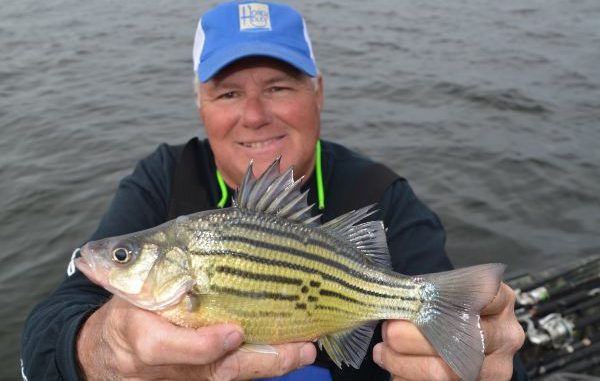
Eddie Halbrook fishes five days a week (but never on Sunday), year-round.
“I fish, I hunt, I take care of my grandkids, I go to church — but mostly I fish,” the avuncular 64-year-old grinned.
When he isn’t running guide trips, he fishes for fun.
He has been doing this since retiring at 58, after 40 years working in a paper mill. He started guiding part time over 30 years ago while still working at the mill, and presently he’s the only fishing guide on Caney Lake.
The lake, properly named Caney Creek Reservoir, is small — only 5,000 acres — but it has developed an amazing history in its 29 years of existence. It has produced six of Louisiana’s Top 10 largemouth bass, two of six record yellow bass, four of 10 record bluegill, five of the Top 10 black crappie and an amazing eight of the top 10 chinquapin.
Halbrook needs to fish a lot. Every year he puts on “about three” big fish fries for his church, as well as others for family reunions and the Christian Motorcycle Association.
It takes a lot of fish to feed all those people.
The feeds certainly don’t feature bass.
“I used to be a serious bass fisherman,” he admitted, “but two shoulder surgeries put an end to all that.”
Most of the fish at the fries are crappie, but a lot of them are yellow bass.
“Yellow bass are a lot of fun to catch,” Halbrook said. “And I like to eat them. A lot of people don’t eat them. To me, they taste as good as a bass. Now you can’t compare bass to crappie, but they are good eating!
“Some people look down on catching yellow bass. They fish in other lakes and catch them little ones, not big ones like here (at Caney). I’ve seen people slam them real hard into the bottom of the boat to bust them before they throw them back. That’s a game fish; a game warden could give them a ticket.
“The real thing is that they don’t like to clean them. Their fins stick them and their gill covers cut their hands.”
Yellow bass can be caught on Caney Lake year round, but the best time is December through March, Halbrook said.
In the summer, they scatter over the whole lake, where they school with ¾- to 5-pound largemouth bass.
The species prowl the lake together, looking for threadfin shad to ambush. But shad are cold-sensitive, and in winter they move to the deep end of the lake near the dam.
Yellow bass, as well as crappie and some largemouths, follow them there.
“Yellow bass really start biting when the water gets below 50 degrees. It starts below 60 degrees, but gets best below 50 degrees,” Halbrook said. “I fish for them, and I get some yellow bass charters.
“They are great for families. It ain’t nothing to catch a hundred of them.”
